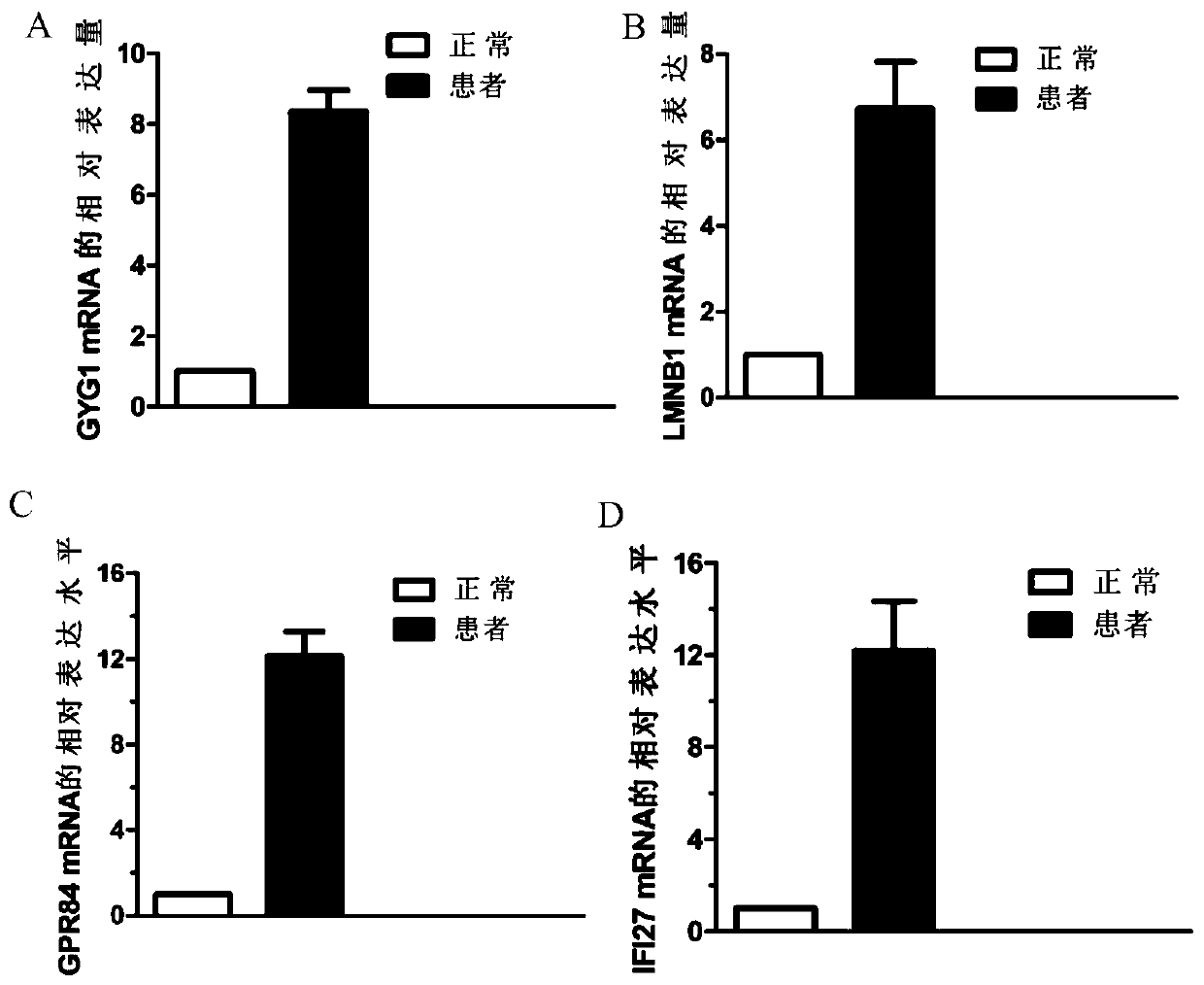Biomarkers for the diagnosis of respiratory viral infections in children
A respiratory and children's technology, applied in the field of biomedicine, can solve the problems of lack of pathogenesis, affect the host's antiviral response and virus replication, and achieve the effect of accurate diagnosis
- Summary
- Abstract
- Description
- Claims
- Application Information
AI Technical Summary
Problems solved by technology
Method used
Image
Examples
Embodiment 1
[0099] Example 1 Screening for Gene Markers Related to Children's Respiratory Syncytial Virus Infection
[0100] 1. Sample collection
[0101] Five normal children's blood and blood samples from children with respiratory syncytial virus infection were collected, and the sample name, number, sampling date, sample processing process, etc. were written. All the above samples were obtained with the consent of the ethics committee.
[0102] 2. Preparation of RNA samples
[0103] RNA samples were extracted using Invitrogen's Blood RNA Extraction Kit. For details, see the instruction manual.
[0104] 3. Quality analysis of RNA samples
[0105] The above extracted RNA was subjected to agarose gel electrophoresis, the concentration and purity of the extracted RNA were detected by Nanodrop2000, the integrity of the RNA was detected by agarose gel electrophoresis, and the RIN value was determined by Agilent2100. The total amount of RNA required for a single library construction is 5ug...
Embodiment 2
[0114] Example 2 QPCR sequencing to verify the differential expression of genes
[0115] 1. According to the detection results of high-throughput sequencing, the differentially expressed genes were verified by large-sample QPCR. According to the sample collection method in Example 1, 45 cases of blood from patients with RSV infection and 18 cases of normal children's blood were selected.
[0116] 2. RNA extraction
[0117] RNA samples were extracted using Invitrogen's Blood RNA Extraction Kit. For details, see the instruction manual.
[0118] 3. Reverse transcription:
[0119] The reverse transcription kit of TAKARA Company was used for operation. Specific steps are as follows:
[0120] (1) Take 2 μg of total RNA for reverse transcription, add 2 μl of Oligo(dT), and mix well. Immediately after 5 minutes in 70°C water bath, ice bath for 2-3 minutes.
[0121] (2) Construct a 25 μl reaction system, including 5 μl of 5× reverse transcription buffer, 5 μl of dNTP (2.5 mM), 40...
Embodiment 3
[0148] ROC analysis of embodiment 3 differentially expressed genes
[0149] Combining the 4 differentially expressed genes screened above, using the ROC curve method and calculating the area under the curve (AUC) to evaluate the diagnostic value of significant influencing factors for respiratory syncytial virus infection in children, AUC and its 95% confidence interval Evaluated by MedCalc, according to different AUC values, it can be divided into no prediction performance (AUC<0.5), low prediction performance (0.5≤AUC≤0.7), moderate prediction performance (0.7≤AUC≤0.9) and high prediction performance (0.9≤ AUC≤1), P<0.05 means the difference is statistically significant.
[0150] The results are shown in Table 1. The area under the curve for the diagnosis of respiratory syncytial virus infection in children by gene combined detection ranged from 0.878 to 0.986.
[0151] Table 1 Area under the curve of differentially expressed genes
[0152] Gene
PUM
| Property | Measurement | Unit |
|---|---|---|
| affinity | aaaaa | aaaaa |
Abstract
Description
Claims
Application Information
 Login to View More
Login to View More - R&D
- Intellectual Property
- Life Sciences
- Materials
- Tech Scout
- Unparalleled Data Quality
- Higher Quality Content
- 60% Fewer Hallucinations
Browse by: Latest US Patents, China's latest patents, Technical Efficacy Thesaurus, Application Domain, Technology Topic, Popular Technical Reports.
© 2025 PatSnap. All rights reserved.Legal|Privacy policy|Modern Slavery Act Transparency Statement|Sitemap|About US| Contact US: help@patsnap.com


